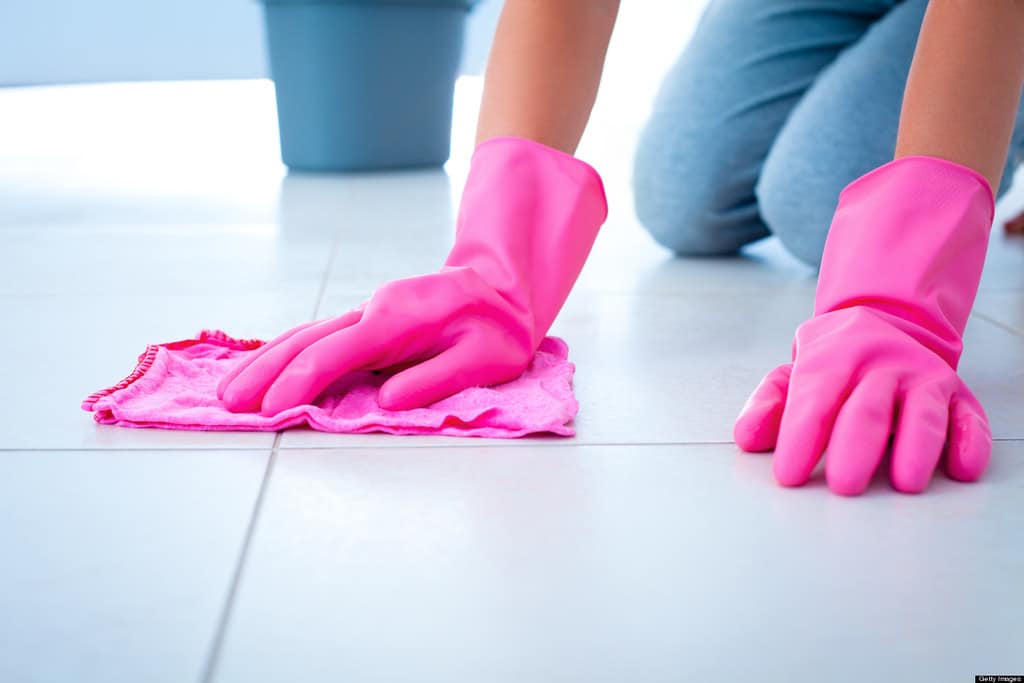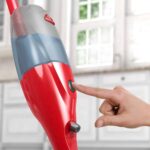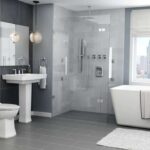There are thousands of consumer reviews directed toward products that claim to be the best for your floors, but how do you know which floor cleaners will get the job done? And even if you find a good floor cleaner, how do you know if it’s safe for your hardwood or laminate? Few people like the chemical smell or residue left behind by commercially-made mopping products. But there are other solutions you can try.
Clean mop water and the right cleaner are essential for deep cleaning. To make it easy to know what to put in your mop water, we’ve created this list of simple solutions you can make at home with ingredients you have around the house.
Table of Contents
What to Put in Mop Water? Here are some suggestions
Vinegar Solution
Vinegar is one of the most popular ingredients in homemade mop water because it cleans well and leaves behind no residue.
It’s also cheap and easy to find at any grocery store or home improvement store. You can use white vinegar, apple cider vinegar, or brown vinegar, depending on what kind of cleaning job you want to do with your mop water.
The vinegar’s acidic nature makes it a great cleaning agent, but you should not use it to clean natural stone tile. The acid can etch into the stone and ruin your flooring.
You should add a mixture of 1 part vinegar in 3 parts water to your bucket while mopping the floor. The vinegar will help get rid of dirt and grime, but you may want to use another cleaning agent in addition.
Choose from various products, including dish soap, laundry detergent, or laundry booster, depending on the job you’re doing. You can also add a few drops of essential oils if you want to make your mop water smell nice.
Bleach Solution
A bleach solution can be used as an all-purpose cleaner around the house because it kills germs, removes stains, and sanitizes surfaces such as toilet bowls or countertops where food preparation takes place frequently.
You should avoid using bleach on porous materials like stone and wood, and be sure that your flooring manufacturer does not recommend against using it. Test a small and inconspicuous area before applying the product to your entire floor.
To make this cleaning solution, mix 1/4 cup bleach with 1 gallon warm water (or follow manufacturer recommendations)
Dish Soap
A little bit of dish soap added to your mop water will help get rid of stubborn stains on linoleum floors or tile floors in general.
This works especially well on greasy stains like those left behind by cooking oil splatters or drippings from fried foods like french fries or chicken nuggets.
Mix one part dish soap with two parts warm water in a bucket or large container. Pour into a mop bucket and add warm water until it reaches the desired level. This solution is perfect for cleaning floors because it cuts through grease and grime without leaving streaks behind!
You can also add essential oils such as tea tree oil or lavender oil for an extra boost of cleaning power!
Rubbing Alcohol
Rubbing alcohol is an extremely versatile cleaner that will work wonders on any type of hard surface (including floors). The best part about rubbing alcohol is that it leaves no residue behind after being wiped down with clean water (unlike some other alcohol-based cleaners).
Just mix 1 cup of rubbing alcohol with 1 gallon of warm water together in a spray bottle or bucket and use as you would any other cleaning solution!
Rubbing alcohol can be a great addition to your mop water because it cleans just like vinegar, but without the scent.
Window Cleaner
If you have leftover window cleaner from cleaning your windows, this is a great way to repurpose it.
Window cleaners dry up quickly, so they’re good for cleaning floors with shiny surfaces. Many window cleaners have ammonia as an ingredient; however — be careful if using them on polished or hardwood surfaces like engineered wood, as it will dull the finish.
Just fill up the bucket with water, add some window cleaner, and use it as normal. It’s especially helpful if you have linoleum floors that are difficult to clean since they tend to get really dirty really quickly.
Ammonia
You can use ammonia to remove the buildup of other cleaners that occurs with consistent mopping. The ammonia will also help to kill bacteria and remove odors. If you are using ammonia in a small room, open windows or doors to ventilate the area.
Always wear gloves when handling it, and do not mix it with bleach—it should only be used once or twice a year to get rid of waxy buildup.
You can dull the finish of wood or hardwood flooring by using ammonia, so check with the manufacturer to see if this is safe.
Add a few drops of ammonia to a bucket of warm water and mop the floor. You can also use an ammonia-based cleaner that is designed for floors.
Conclusion (What to Put in Mop Water?)
The best cleaning solution, in our opinion, is warm water and vinegar solution with a little dish soap. The vinegar will cut through the dirt and grease and dissolve it, while the dish soap will help to emulsify it. The warm water will soften up any dirt on your floors so that it can be easily rinsed off.
You can also use bleach or ammonia, but be careful when trying these solutions on your floors as they may discolor hardwood or engineered wood. Window cleaner and rubbing alcohol may be better suited for polished floors and hard surfaces.
If you have a lot of dirt and grime buildup on your floor, it may take more than one application of cleaning solution before the floor looks clean again.
Because water-based cleaning solutions can stain natural wood floors without a good coat of polyurethane varnish or some other sealer, be cautious when using them on unstained flooring surfaces.
Laminate-flooring manufacturers generally advise against allowing water to seep through seams in the floor. Lightly damp mopping is all that most floors can tolerate, but never let pooling water saturate wood or laminate flooring.


